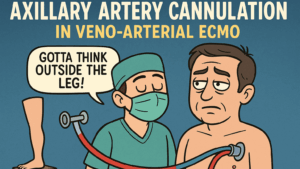Abstract
Venovenous bypass (VVB) is a technique used in liver transplantation (LT) to maintain hemodynamic stability and abdominal organ perfusion and thereby improve patient outcomes. Despite its perceived benefits, VVB utilization has declined globally due to concerns related to heparinization, major bleeding and the need for expertise. Recent advancements, such as percutaneous cannulation techniques and improved extracorporeal technology have improved the safety of VVB in LT. This paper presents a modified VVB circuit with enhanced safety features. Cannulation plays a pivotal role in VVB establishment, with percutaneous methods increasingly favored. Studies demonstrate VVB’s efficacy in improving patient outcomes with lower incidence of acute kidney injury and reduced operative time and blood loss, with no added morbidity or mortality. However, its routine use faces challenges, with alternative techniques gaining traction. Our experience highlights VVB’s role in various clinical scenarios, including patients with high Model for End-Stage Liver Disease (MELD) scores, challenging surgical anatomy, portal vein thrombosis and pre-existing cardiovascular disease, emphasizing its safety and efficacy. Continued research is needed to optimize VVB techniques and ensure better outcomes for liver transplant recipients.







